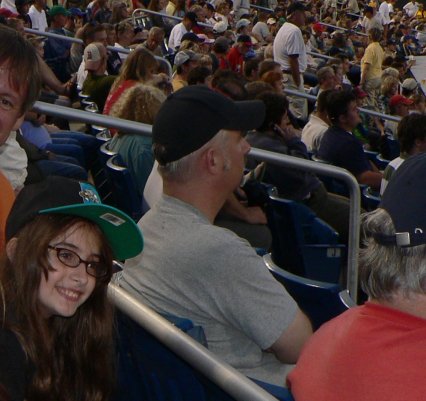|
The same yet somehow different...
One of my correspondents, on discovering the periodic table of elements, asked
if it were true that everything on Earth was made from these elements. It does
seem amazing that all objects on Earth from pebbles to people are assembled from
at most, and usually much less than, 92 pieces - the number of naturally
occurring elements. In fact the situation is more amazing than that.


It turns out that each of the 92 naturally occurring elements are made from
only three objects, protons, neutrons and electrons. As far as is known the
total number of protons, neutrons and electrons has not changed significantly
since they were created in the first second or so after the
Big Bang. There are
about 7 protons for every neutron and 1 electron for every proton. The total
number of protons, neutrons and electrons in the universe is
1080
give or take a power of ten. From the existing protons, neutrons and electrons,
must be made all ordinary matter contained in the universe, where ordinary
means the matter we would recognize as the stuff the world is made of.
The first ordinary matter to appear after the Big Bang was hydrogen, but
pebbles and people are made from many elements in addition to hydrogen. Key
ingredients include carbon, calcium, oxygen, nitrogen and traces of heavier
elements. These elements are only produced from the fundamental particles in the
nuclear furnace at the interior of stars. Even at that it is only through the
luckiest of chances that these elements are created. If not for a remarkable
coincidence in the energy required to create stable carbon and the energy
available in the interior of stars, nothing heavier than the element beryllium
would ever have been created in significant quantities.
In spite of the heavy odds against it, we ended up, here on Earth, with the
92 elements from which everything is made. Of course pebbles and people are
only temporary arrangements among these elements. The passage of a few centuries
will certainly reduce a person to dust, and a few millennia will do the same for
a pebble. Eventually some cosmic cataclysm might blast all this dust
into deep space where gravity will go about its job of tidying up the universe
and use the dust to make a new star perhaps with an Earth-like planet orbiting it.
Objects come and go but the raw material from which they are made is in fact
immortal.
Speaking of pebbles and people, there is clearly a profound difference
between a pebble and a person, even though they are made from the same raw
material. I know that a person can appreciate a pebble, its smoothness, pleasing
colors and so on. As far as I know it is not possible for a pebble to
appreciate a person, her beauty, her cheery personality and the like. Exactly
what accounts for this difference is a question that has not been
satisfactorily answered by scientific investigation yet.
The distinction might be expressed as the difference between a passive and
active participant in history. The pebble is limited to following Newton's laws,
only changing its velocity when pushed by some external force. The healthy
person can make a decision to move and carry it out, without benefit of external
actors. Furthermore the person can select among a huge number of possible
movements, the one most likely to alter the future
state of the universe to
one the person thinks is desirable - possibly picking up a pebble to admire it
more closely.
Human beings, of all Nature's animals, seem to have an extraordinary ability
to predict and to some degree control the future states of the universe... well
most human beings that is. I have known four-year-olds with an amazing degree
of that skill, and forty-year-olds with a seriously diminished capacity to
either predict or control the future. Sadly many of the latter end up in the
custody of the criminal justice system, possibly because of nothing but a failure
of imagination.
In the following pages I will try to provide some of the thinking behind my
assertions about the differences between people and pebbles, beginning with some
thoughts on the behavior of pebbles, then moving on to the more complicated
issue of the behavior of people including how they alter the future of the universe.
|




